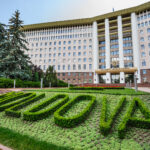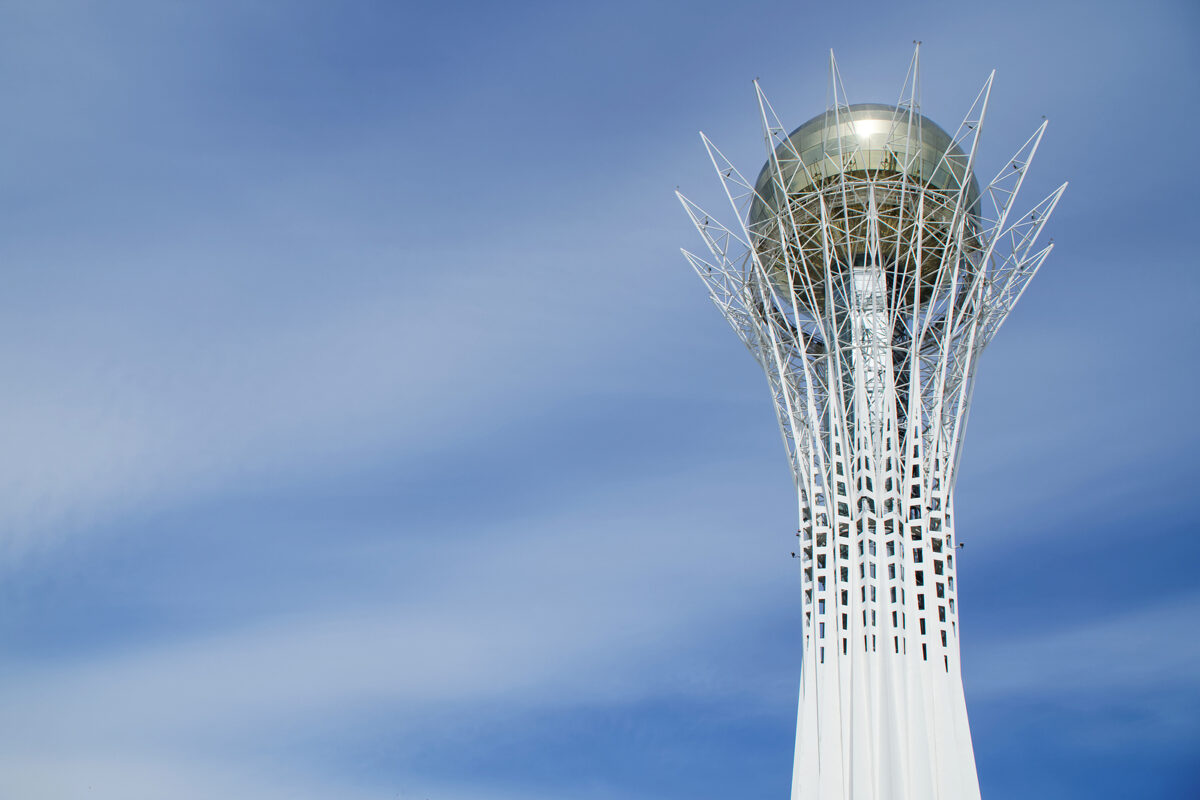Both policy makers and the media have recently been talking a great deal about the Middle Corridor, or Transcaspian Corridor, a trade route from Southeast Asia and China to Europe via Kazakhstan, the Caspian Sea, Azerbaijan, Georgia and Turkey.
Scholars argue that the West should support this Trans-Caspian International Transport Route (TITR) as an alternative to Russian-based trade routes. The EU, with its Global Gateway, is actually already helping the TITR and has been boosting its relationship with Kazakhstan ever since the Russian invasion of Ukraine.
The US meanwhile is strengthening its cooperation with Central Asia through a security, economic, and energy partnership through its C5+1 platform. And the World Bank just identified 10 actions that can triple trade through the Middle Corridor by 2030.
But if Central Asia and the Trans-Caspian region in general (composed of the countries in Central Asia and South Caucasus) want to become a developed and stable area, it needs to follow the same path that Europe took more than 70 years ago, by integrating national energy and industrial production before becoming a corridor.
The EU’s embryonic start, with its first supranational organisation the European Coal and Steel Community in 1952, created the core elements of energy and industrial development in a single market. This process was supported by the US, which fostered unity rather than division among European nations (the first time in history an external power followed such a policy). Now, the US and the EU should do the same with Central Asia/Trans-Caspian region.
Regional, not national interest
What the West (and, most of all) the countries of the region have to realise is that besides the focus on ‘corridors’ they need to focus on ‘unions’, because for development as well as trade we need cooperation in industrial production and the integration of economic systems.
Without regional economic integration the national interest will always be placed above the regional interest, and in the long term national systems will hinder the creation of a Trans-Caspian Union. Without such union trade routes and corridors will eventually help only the two far ends of the bridge, China and Europe, and not the region in itself.
The second thing that the West and the region need to understand is that today actions have to follow rhetoric, as otherwise political will dissipates and with it the momentum for the transition, while external imperial influence will possibly take hold.
Already, Russia and China are using hybrid tools like disrupting energy supplies (Russia) or weaponising critical materials (China), trying to create dependencies in Europe. Furthermore, they try to expand their power in the region, even competing between each other, as Moscow still considers the region its backyard, while China sees Central Asia as a key part of its Belt and Road Initiative.
A ‘Grand Strategy’
A strongly integrated Central Asia/Trans-Caspian region would therefore reach two main geopolitical and geoeconomic goals for the area, besides its economic development: avoid the spheres of influence from foreign imperialistic powers attempting to gain control of regional development; and accompany the new era of technological and energy revolutions as one of the world leaders, with its great potential for rare earth elements (REEs) and its geographical position.
To do that, the countries of the area and the West need to focus on the institutional integration, not only on the corridors passing over their land as a bridge between East and West. The nation’s head of states have to come to terms with such realties and start an integration path, and the EU and the US have to come of age and support this regional cooperation, with a Grand Strategy against possible empires again dominating the world’s heartland.
The two pillars of this Grand Strategy should be energy and technology integration. The current intersection of energy transition, market forces, technological revolution and climate change, is reshaping world energy politics in a period of global disorder creating new maps.
The first practical action from EU and US towards creating a Trans-Caspian Union should be to support these two fundamental areas of energy and technological integration, to foster energy security, critical infrastructures resilience, and technological development.
For the integration of systems and infrastructures one step could be the revival of the Central Asian Power System (CAPS). The CAPS was created under the Soviet Union in the 1970s, constituted from the power networks of present-day Uzbekistan, southern Kazakhstan, Kyrgyzstan, Tajikistan, and Turkmenistan. The system aimed to secure energy supply by establishing a regionally integrated network for both generation and transmission but all was lost after the end of Soviet Union. The EU and the US should push to recreate such systems.
Renewable potential
At the level of green energy transition, the Trans-Caspian region and Central Asia have great wind, solar, and hydropower potential that could support the West’s energy.
The EU’s Global Gateway Initiative on Water, Energy, and Climate in Central Asia already demonstrates EU commitment to supporting the green transition in the region but much more can be done.
The EU and US could strengthen Trans-Caspian regional cooperation by focusing on some key sectors of renewable energy. The EU could create something similar to the US C5+1 Diplomatic Platform, but also to the US Economic Resilience Initiative in Central Asia (ERICEN), launched in 2022, providing 25 million US dollars to fund trade routes, expand investment and support regional connectivity through economic and energy programs.
At the technological level the Central Asian region is not yet particularly well advanced. According to the Global Innovation Index of the World Intellectual Property Organisation, the most advanced countries in the region, Kazakhstan and Uzbekistan, are just 81st and 82nd globally, while according to the International Energy Agency (IEA) some 75 per cent of the technologies needed to achieve net zero energy are yet to be invented.
The EU and the US could support the region in technological development for energy transition, through various initiatives. First of all, with technology transfer: facilitate the transfer of technological expertise, know-how, and best practices from the EU and the US through partnerships, capacity building programmes and similar initiatives. This can encourage also the flow of capital and expertise, leading to mutual benefits and economic growth.
A Trans-Caspian Energy and Industry Community
But the crucial point to connect energy transition and technology development and support regional integration as happened in Europe in the 1950s will be the transfer of technology to process REEs.
In this way the region, rich in critical materials, will not be forced to send mineral ores to Russia and China to be processed and then sold on to Western markets, but will become the hub in the supply chain, and in the future even in the value chain, for the energy transition.
If the Trans-Caspian countries will understand this, they could become key players in the energy transition, not merely a bridge between East and West with the Middle Corridor.
Creating the first Trans-Caspian regional union, in the form of a ‘Trans-Caspian Energy and Industry Community’ (with REEs instead of coal and perhaps cables instead of steel) would be the perfect start.
The EU and US must seize the momentum to support such a development and begin the fight back against Russia and China’s hybrid warfare, especially in the energy-technological sector, and their imperialistic desires of expansion in throughout the region.







